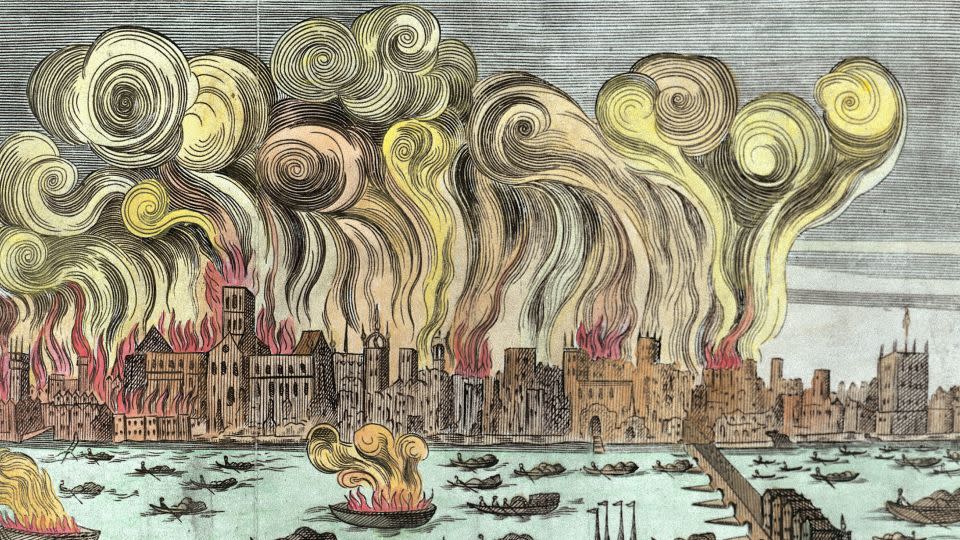Experts identify the first witness to the Great Fire of London
The Great Fire of London in 1666, which razed 436 acres of the mostly-timber city and lasted for four days, was so devastating it secured its place in the history books.
But a key part of this historic blaze, which destroyed 13,200 houses and 87 of the city’s 109 churches, remained a mystery: Who first noticed the flames?
Now, experts say they have identified the first person to witness the fire and raise the alarm as Thomas Dagger, a journeyman baker in Thomas Farriner’s bakery on Pudding Lane.
Research using letters, pamphlets, legal and guild records has now “conclusively” revealed the identity of Dagger for the first time, according to a press release from the Museum of London sent to CNN Friday.
Farriner’s home was the first to be destroyed in the fire, which began on September 2 1666. Although experts knew a lot about his family, Dagger’s role had, up until now, gone “unrecognised,” according to Kate Loveman, professor of early modern literature and culture at the University of Leicester, who conducted the research.
One letter said that Farriner’s “man” – meaning his servant or journeyman – was woken in the early hours of the morning “with the choke of the smoke.” Researchers have identified this “man” as Dagger, who roused the household so they could escape out of an upper window.

“It was fascinating to find out more about what happened on that famous night. Although most of the evidence about the Farriners is well known to historians, Thomas Dagger’s role has gone unrecognised. Unlike the Farriners, his name didn’t become associated with the fire at the time,” Loveman said in the release.
“Soon after the disaster, he merges back into the usual records of Restoration life, having children and setting up his own bakery. His is a story about the fire, but also about how Londoners recovered,” Loveman added.
The damage from the fire was so extensive that it took nearly 50 years to complete rebuilding work on the city, with St. Paul’s Cathedral, which was ruined by the disaster, not finished until 1711.
During the rebuild, new regulations were introduced to prevent such a disaster happening again, with houses required to be faced in brick instead of wood, and some streets widened, according to the Museum of London.
The new discoveries will be included in the Museum of London new site in Smithfield, which will open in 2026. The museum’s “Great Fire” exhibit will place the stories of real Londoners at the heart of a newly-designed, interactive space at the new site, according to the museum.
For more CNN news and newsletters create an account at CNN.com

